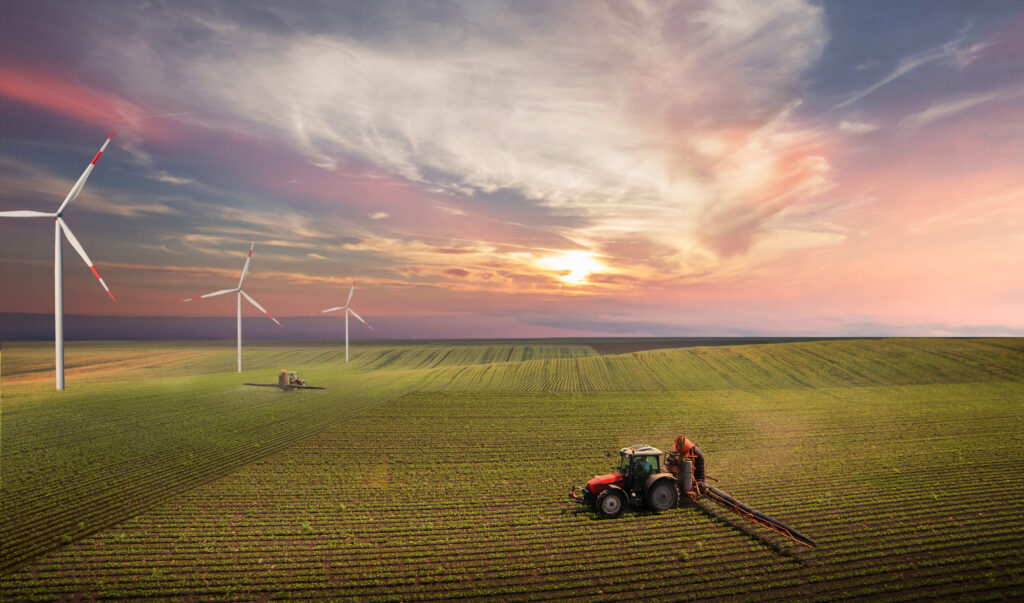Hanging on?
Farmers fight pressure from tariffs, low commodity prices

PERRY BEEMAN Jun 27, 2019 | 1:05 pm
8 min read time
1,807 wordsAg and Environment, Business Record Insider, Economic DevelopmentThe signs of stress in the farm economy from low crop prices and tariffs run from higher loan volume to farmers barely hanging on to land.
Still, there is reason for optimism, say economists, finance experts and land brokers.
Even in the short term, there’s been good news as corn prices that were stuck around $3.50 a bushel in early spring recently flirted with $5 a bushel. Farmers are hoping that a new trade agreement with Mexico and Canada will be ratified soon, and of course all eyes are on the trade war with China.
The weather also led many farmers to decide not to plant large parts of their farms, and aid payments are likely to be break-even at best, and probably significantly less.
An Iowa State University study estimated the agricultural economy damage from the trade wars could be as much as $2.2 billion, and President Donald Trump has moved to soften the blow with aid packages.
“Financial stress ratcheted up last spring for farmers submerged by historic flooding,” said Cheryl Tevis, president of Iowa Women in Agriculture and a Boone County farmer.
“Then additional flooding occurred along the Mississippi. Farmers who were spared spring flooding just might be submerged by the ongoing economic undertow of the past five years.”
Part of that undertow, along with years of low crop prices, involves the tit-for-tat tariffs among the United States and its major trade partners.
Jennifer Zwagerman, who on July 1 becomes director of Drake University’s Agricultural Law Center, said: “The tariffs are definitely not helping the farm economy and pain for farmers. Prices were already low and the farm economy hurting prior to them being implemented, and the longer this goes on, the more it hurts and the less optimism there is that prices will rebound anytime soon. Total purchases from China are down about 75% last I saw.”
The Kansas City Federal Reserve noted increased borrowing in the first quarter, with some signs that operating income at farms was stressed and some owners were using more of their land for collateral.
“The growth in loan volumes was due primarily to additional increases in the average size of loans to farmers,” the Fed reported. “Alongside larger loans and higher loan volumes, small, agricultural banks have made adjustments to continue to meet strong demand from farm borrowers and mitigate risks associated with lending in a low income environment. Despite continued weakness in agricultural credit conditions, earnings at agricultural banks have remained strong, delinquency rates low and farmland values stable.”
The first-quarter National Survey of Terms of Lending to Farmers found that non-real estate lending had increased 9% over the previous year. The number of loans for operating expenses was about the same, but farmers were borrowing more for livestock operations and to buy machinery and other equipment.
Tevis said loan delinquency rates have remained fairly low. “But working capital has been decimated,” according to the U.S. Department of Agriculture, Tevis said. “Trade agreement turmoil has stacked on another layer of distress, especially for soybeans. The debt to asset ratio has climbed for six consecutive years.”
That has led some banks to tighten their collateral requirements, though there are some in the industry who wonder if banks aren’t watching their risk closely enough, some bankers say privately.
Tevis said some borrowers are selling assets, and Chapter 12 bankruptcies “are at the highest levels in the Midwest in more than a decade.”
Land broker Steve Bruere of Peoples Co. said he’s more optimistic that Iowa farmers will sidestep long-term damage, and people still are paying good money for land, he notes.
But there is no doubt that a long stretch of low prices for corn and soybeans, combined with flooding and tariff-related trouble, has brought pain, he added.
Bruere has seen farmers sell part of their farm — maybe 80 or 160 acres — to stay afloat, but it’s not that common. “We are seeing some of it, but not to the degree you might think. I thought we would see more of it,” he said.
“Time will tell on damage,” Breuer said. “The commodity groups are concerned. But there is still global demand for food, fiber and fuel. Still, it’s hard to get those markets back” once tariffs lead buyers to look elsewhere, he said.
“Normally people can live through the cycle and be optimistic, but now we are fighting with China,” Bruere said. “They think about 100 years like we think about two years. There are a lot of people in ag that aren’t optimistic that the tariff issue is going to be resolved.”
“Prices have taken a hit, but the uncertainty and morale is what you notice while you are talking to farmers,” Bruere said. “When you get beat down for six years and throw the tariff on top of that, it creates some pain.”
Aid will help but won’t take away the pain. “Cash rent land is probably losing money right now,” Bruere said.
But the recent bump in crop prices because of an expected loss in production this year due to the weather might end up saving some farms from the auction block, he said.
There are ramifications in the finance arena, too. Banks are identifying problems “but not closing their eyes,” Bruere said. On the plus side, six or seven years of low commodity prices have forced farmers to run their operations more efficiently. “When we had $7 corn, it was easy to be sloppy,” he said.
Bruere said he is surprised land prices haven’t reacted more to the soft commodity prices of recent years. “Values have been strong, so balance sheets are strong,” he said.
“There is a real lack of land supply.”
Zwagerman said it would be an understatement to say there’s a lot of uncertainty about the future of Iowa farming.
“With the weather this year, we may not have the oversupply concerns that we’ve seen the past several years that were a factor in driving down prices. That being said, there’s also a much smaller market for the crop than we have seen in previous years, so the price increase may not be as much as we would hope.
“I would like to think that we are due to see prices increase and a stronger economy for farmers, but I am concerned that the long-term impact of these tariffs and a potential market loss, along with increased international production, will result in a continued oversupply of corn and soybean production in the U.S. that will keep prices lower,” Zwagerman said.
“In an ideal world, I would love to see the government provide support to farmers for the loss in income, while also helping them perhaps diversify production or provide support for other commodities and crops that will help balance the supply of corn and soybeans in the U.S. market.”
China presents a special challenge, Zwagerman said.
“Permanent damage is a big concern in the agricultural sector and beyond,” Zwagerman said. “China is a great example, where because of the tariffs they are working to increase the country’s own production, and have stepped up purchases from countries like Russia and Brazil. These countries, in turn, are increasing production to meet demand. In the soybean market, and to an extent corn, we don’t have trading partners that are going to be able to make up the difference if the China market is permanently lost or greatly reduced. This has been a huge opening for many of our agricultural competitors in these key commodities.”
Coming up with trade deals might not take away all the pain, Zwagerman added.
“Even if tariffs are removed and the markets are again open to the extent they were before, there’s the risk that to get U.S. crops back into the market, prices would have to be low in order to undercut the competitors that have filled the gap due to tariffs,” she said. “This may result in more markets and increased demand, but I worry it won’t have the impact on commodity prices that we would hope, particularly in the short term.
“In the long term, there is no doubt there is a strong international supply of corn and soybeans, and looking ahead, this is going to have a major impact on the U.S. farm economy,” Zwagerman said. “What we are seeing with various livestock diseases internationally, the loss of dairy farms here in the U.S. and other related concerns is also impacting demand for corn and soybeans as livestock feed here in the U.S. and beyond.”
And the debate isn’t simply over crop farming. The commodities economy rolls over the manufacturing, finance and other sectors.
“The damage is to the ag economy as a whole, as well as to all consumers, and I think in particular to rural communities,” Zwagerman said. “Manufacturing, input suppliers, financial institutions, food service and retail, the list goes on and on as to the many ways in which the farm economy impacts the bigger agricultural economy and overall economy as well.
“There have been efforts made lately to push for more environmental measures and for producers to implement new practices, but the truth is that those practices cost money, and right now there’s very little of that on the producer side to invest in activities that do not increase the bottom line,” Zwagerman added. “Support for these types of programs, for diversification, for new markets, and more, needs to come from all levels of the government and other public and private sources if we want to see a faster implementation.”
Iowa State University ag economist Chad Hart has reported that the soybean market was particularly hard hit by the trade war, with prices falling nearly 20% before a partial recovery. Prices are still low historically.
In an appearance on Iowa Public Television’s “Iowa Press” in late May, Hart said trade wars are likely to bring the next recession earlier. “You’re talking about three trade partners that make up a gigantic portion of global trade and basically throwing those trade rules up in the air, creating a lot of uncertainty in the market, creating a lot of volatility,” Hart said.
On the same program, Creighton University economist Ernie Goss told Radio Iowa that farmers “are getting hit very hard” by the tariffs and that the probability of an early 2020 recession has doubled in a year and a half. The lack of an approved U.S. Mexico Canada Agreement, the replacement for the North American Free Trade Agreement, is making things worse, he added.
“When politics and economics collide, economics loses and politics is winning,” Goss said. “And when politics wins, I’m not so sure it’s good for the consumer and for the producer.”
If the U.S. Mexico Canada Agreement doesn’t get ratified because of these new tariffs, the chance of a recession looming soon will increase, Hart said. n










